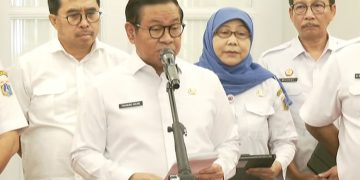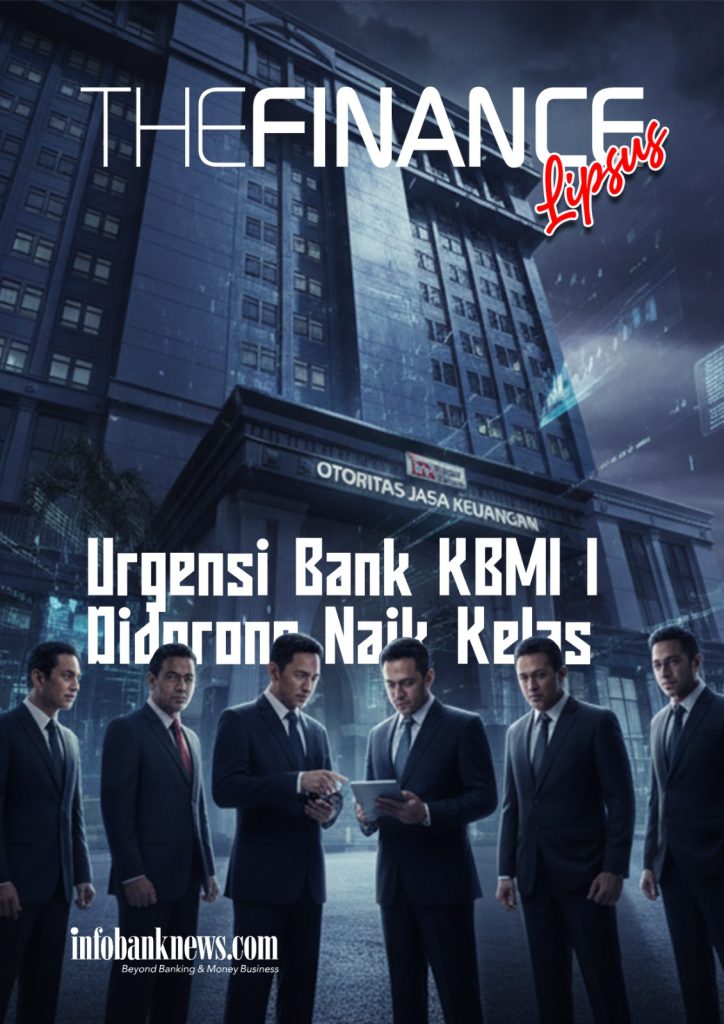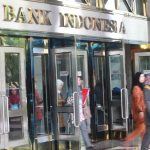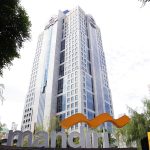by Karnoto Mohamad
STATE-OWNED Enterprises (BUMN) appear to be slack in navigating the COVID-19 pandemic. According to the Infobank Research Bureau, there are 39 SOEs that experience losses in 2020. The losses suffered are not solely due to the impact of the COVID-19 pandemic. Before the pandemic came in March 2020, there had bene 22 SOEs that experienced losses in 2019. Some of them had lost money since 2018 such as Jiwasraya, Survei Udara Penas, Pertani, Sang Hyang Seri, and Bulog. Krakatau Steel made a profit of Rp 319 billion in 2020; yet, for the previous seven years, it experienced losses. In 2021, a number of companies are estimated to still suffer losses, one of them is Garuda Indonesia, which has experienced losses Rp 5.62 trillion per June.
The state has become a savior for SOEs that are under pressure and those having poor financial performances. There are 25 SOEs proposed by the Ministry of SOEs to obtain state capital (PMN) in 2020-2022. The numbers are quite fantastic. After obtaining PMN approval of Rp 42.4 trillion in 2021, SOEs Minister Erick Thohir proposed an additional fund Rp 33.9 trillion.
The additional submissions have been received by Commission VI of the House of Representatives (DPR) and have been submitted to the Budget Agency for approval. With this addition, the injection of PMN funds in 2021 will be IDR 76.30 trillion, 80% larger than the 2020 PMN which is amounted to Rp 42.07 trillion. For the budget year of 2022, the Ministry of SOEs has also submitted a PMN of Rp 72.50 trillion. Therefore, for 2021 and 2022, the amount of PMN proposed is Rp 148.70 trillion.
According to Erick, the contribution of SOEs to state finance is still greater than the PMN received by SOEs. Based on data from the last 10 years from 2011 to 2020, SOEs received PMN of Rp 147 trillion. Meanwhile, the contribution of SOEs is through dividends of Rp 388 trillion, taxes of Rp 1872, and non-tax state income (PNBP) of Rp 1035 trillion. When it is compared to the contribution of SOEs to state finance, the percentage of PMN is relatively small, only 4%.
However, if the contribution is seen based on the productivity of capital participation, the dividends contributed by BUMN are 37.88% of the PMN given for 10 years. This is because the state also receives tax payments from the private sector without having to inject capital. Until 2024, the Ministry of SOEs projects that the amount of PMN needed by SOEs is the same as the dividends. It means that the Government does not get any benefits from the productivity of the invested capital.
However, another result, is the result of development carried out by SOEs in the form of infrastructure development, transportation facilities such as fast trains and LRT, to the provision of electricity, all of which encourage economic growth. Also, providing job opportunities.
Since most of the PMN is used for the Government projects and restructuring, it does not directly increase dividends. Of the PMN of Rp 147 trillion in 2021 and 2022, 80% of it is used for projects done by Hutama Karya, Waskita Karya, and KAI. As for the restructuring of 7% as received by BPUI. Meanwhile, for investment, only 12%, as proposed for Bank Negara Indonesia (BNI) and Bank Tabungan Negara (BTN). “PMN for 2020 to 2024 period is partly a catch-up for the 2017-2018 PMN shortage for the project of the Sumatran toll road,” said Erick Thohir to Commission VI of DPR at a meeting held in July 2021.
Since the capital injection is a consequence of the assignment of a project, there should be no reason for SOEs to record poor performance. For this reason, a number of members of DPR VI Commission warned that PMN should not be used to cover holes due to strategic and management errors in SOEs. “There needs to be confirmation so that SOEs that carry out assignments and have been given PMN do not lose money,” said Aria Bima, the Deputy Chairman of Commission VI of the DPR during a working meeting with the Ministry of SOEs July 2021.
The injection of state funds needed by SOEs is due to their declining financial performance. Moreover, some of them are already in debt. The reason is because many carry out development projects that are Government programs such as those carried out by SOEs in the construction sector. However, there are also SOEs that are sick because they are not competitive in the market or due to miss management, so they have to be rescued like Jiwasraya, which was restructured through BPUI.
There are 33 SOEs with a debt-to-asset ratio of above 80% in 2020. In fact, 12 of them have debts greater than their assets or negative net worth, such as the Indonesian Nuclear Industry, the Indonesian Telecommunications Industry (INTI), Garuda Indonesia, DOK and Shipping, Kertas Kraft Aceh, Kertas Leces, Pengembangan Armada Niaga Nasional, and Survei Udara Penas. The low solvency of a number of SOEs was seen in the years prior to the COVID-19 pandemic as an indicator that a number of SOEs were unable to generate sufficient revenue to be able to finance all of their obligations.
However, in the midst of a pandemic, SOEs in the infrastructure, construction, regional, and warehousing sectors actually recorded a significant decline in their debt to assets ratio. All companies in this sector recorded a debt-to-asset ratio of above 100% in 2019. In 2020, it was successfully reduced to below 100%. For example Perumnas from 232.81% to 90.63%, Wijaya Karya from 139.49% to 75.54%, Housing Development from 136.78% to 73.81%, Adhi Karya from 123.77% to 85.37 %, Batam Island Industrial Area Development from 488.75% to 47.53%, Wijayakusuma Industrial Area from 230.62% to 25.27%, and Banda Ghara Reksa from 158.25% to 33.49%.
The decline in the debt-to-asset ratio does not immediately improve financial conditions because there is pressure from the income side which makes its profitability eroded. For example Hutama Karya, Waskita Karya, and Perumnas which suffered losses last year. However, with the PMN injection that will be received, the companies will be healthier. Some SOEs’ financial conditions are battered, but some of them are still healthy during the pandemic.
According to Infobank Research Bureau, there are four categories of BUMN. One, the company is healthy and profitable. There are 24 companies recorded, including Bank Rakyat Indonesia (BRI), Bank Mandiri, Telkomunikasi Indonesia, Djakarta Lloyd, Pelayanan Nasional Indonesia, Perhutani, Jamkrindo, Pupuk Indonesia, and Semen Indonesia. Two, companies that were previously healthy and profitable but became unhealthy due to the impact of the pandemic, such as Hutama Karya, Angkasa Pura I, Angkasa Pura 2, Sarinah, Damri, KAI, and TWC Borobudur Prambanan and Ratu Boko.
Three, previously unhealthy state-owned companies that become healthy because of efficiency and transformation, such as Krakatau Steel, RNI, Perusahaan Perdagangan Indonesia. Companies in this group must prove themselves that the improvement in their financial performance is not due to polish on paper at the end of this year and next year. Four, poor state-owned companies which always experience losses, even since before the COVID-19 pandemic, such Industri Gelas, Kertas Kraft Aceh, and Merpati Nusantara Airlines.
The Ministry of BUMN has included SOEs in the dead-weight cluster, namely companies that are in unhealthy conditions and do not yet have a clear direction between creating economic value and social value. At the beginning of his term as the Minister of State-Owned Enterprises, Erick Thohir said the options for this category of companies were to be consolidated or closed. However, almost two years have passed and no decision has been made.
What is clear is that efforts to restructure SOEs with PMN are currently easier to gain legislative support. Apart from the fact that there are more political parties (political parties) supporting the Government of Joko Widodo (Jokowi) in the second period, Erick Thohir is more accepted by DPR than Rini Soemarno, who was boycotted by the DPR for most of her tenure as Minister of SOEs in 2014-2019. As a result, SOEs that are tasked with building infrastructure without the supports of PMN must pursue debt until their solvency decreases and must be helped by funds of PMN.
In the future, SOEs will still carry out duties from the State such as infrastructure development and in the short term is to help economic recovery affected by the COVID-19 pandemic. President Jokowi has stated that all his ministers must follow the President’s vision. Therefore, the SOEs minister must also pay attention to the President’s vision to maximize economic growth, especially since the President has delivered a political promise to print 7% economic growth. As a leader, it is natural for Jokowi to aim of having a legacy in the form of massive infrastructure development.
What is clear, through SOEs (BUMN), the Government has confirmed three roles at once, namely the task of public services, development tasks, and empowerment tasks. The development tasks are most interesting because there are some ‘projects’. Therefore, it is not surprising that from the past until now, many people in the circle of power have become administrators in SOEs; and because SOEs have to work on projects whose return on capital is not business-friendly, their financial performances will be disrupted, so it is a consequence that the Government has to inject a lot of PMN into state-owned companies.













